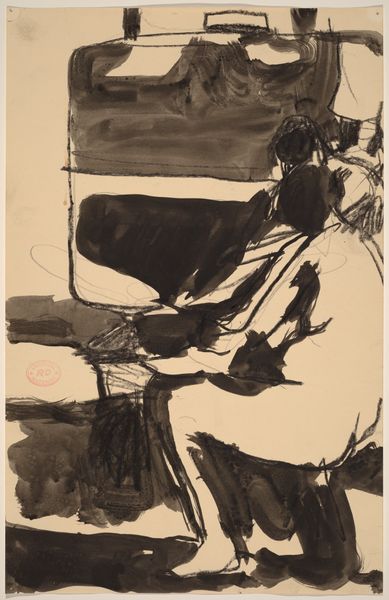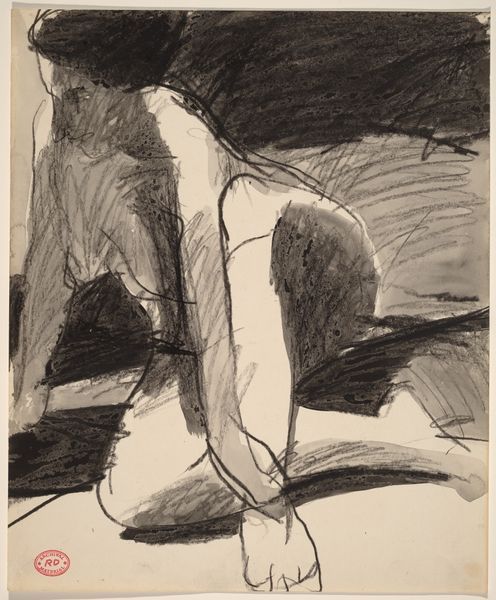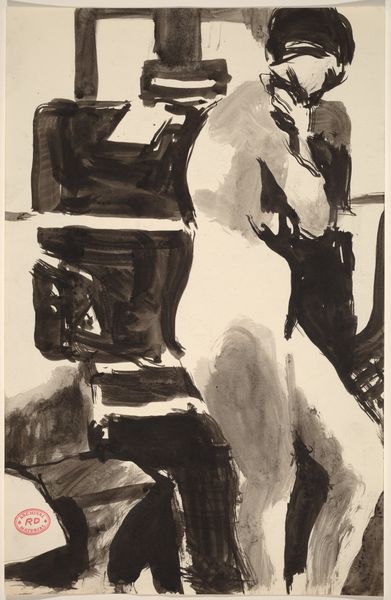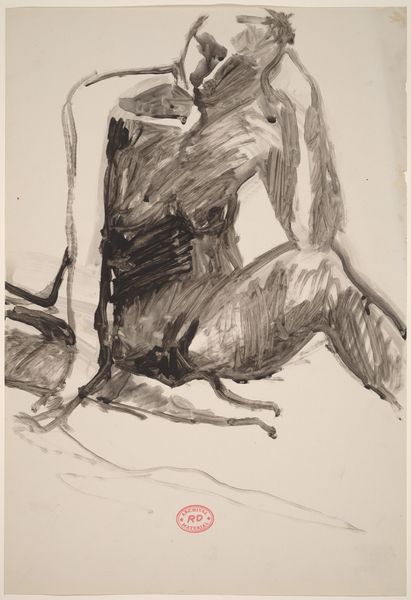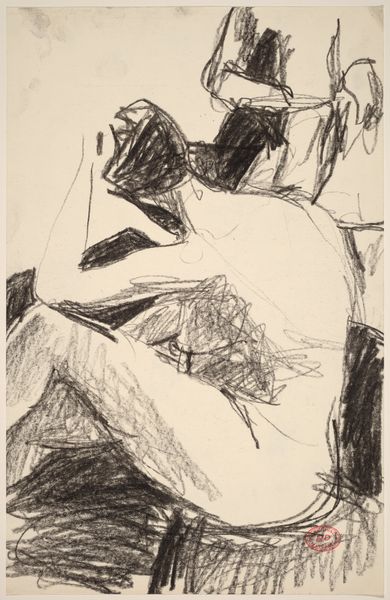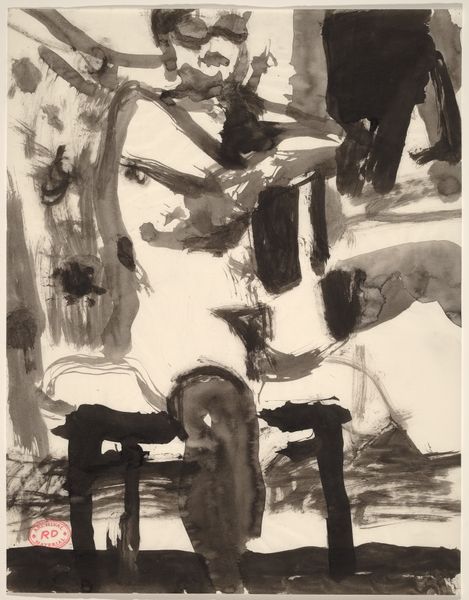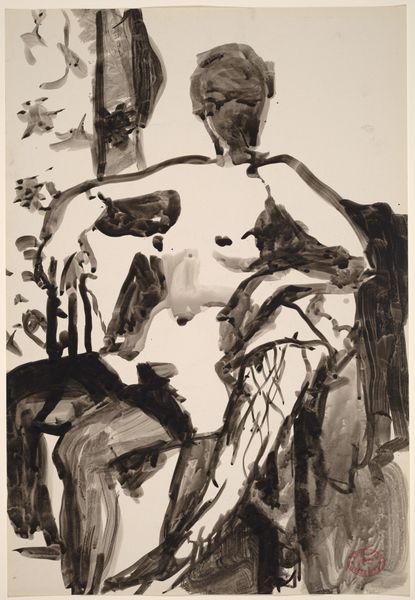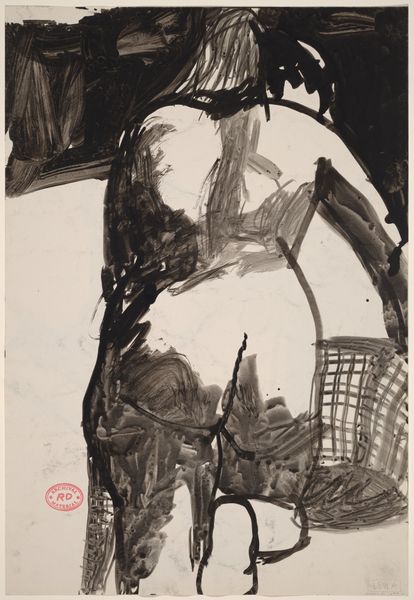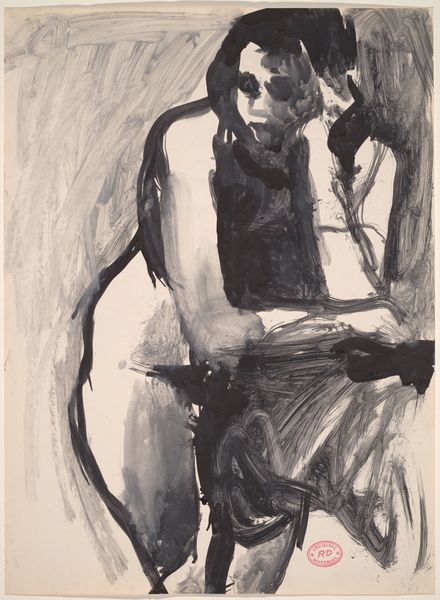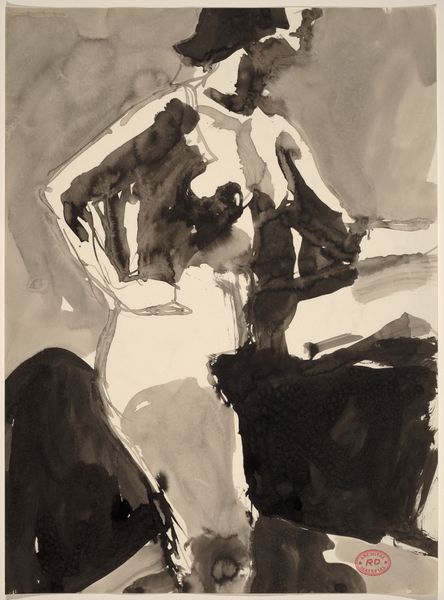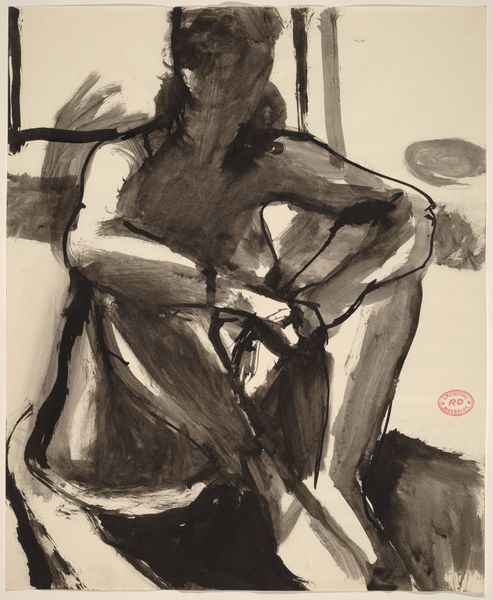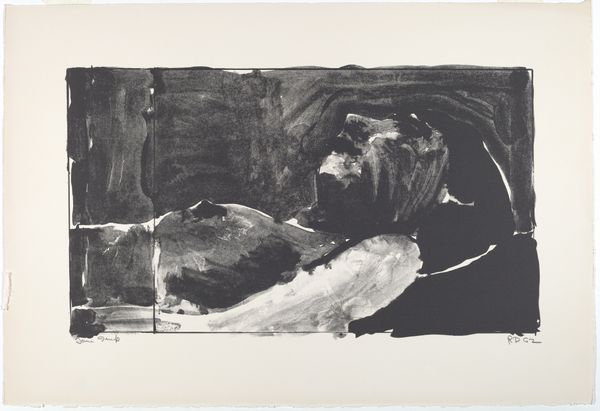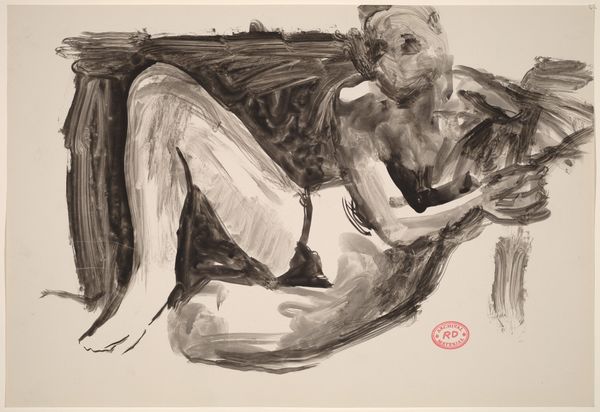![Untitled [seated female nude leaning forward with bowed head] by Richard Diebenkorn](/_next/image?url=https%3A%2F%2Fd2w8kbdekdi1gv.cloudfront.net%2FeyJidWNrZXQiOiAiYXJ0ZXJhLWltYWdlcy1idWNrZXQiLCAia2V5IjogImFydHdvcmtzL2JkOWY3NTU0LTQ2ZWUtNDA1ZS1hYTZmLWIzYjQ2ODc2MTIzMi9iZDlmNzU1NC00NmVlLTQwNWUtYWE2Zi1iM2I0Njg3NjEyMzJfZnVsbC5qcGciLCAiZWRpdHMiOiB7InJlc2l6ZSI6IHsid2lkdGgiOiAxOTIwLCAiaGVpZ2h0IjogMTkyMCwgImZpdCI6ICJpbnNpZGUifX19&w=3840&q=75)
Untitled [seated female nude leaning forward with bowed head] 1955 - 1967
0:00
0:00
drawing, ink
#
abstract-expressionism
#
drawing
#
charcoal drawing
#
figuration
#
bay-area-figurative-movement
#
ink
#
nude
Dimensions: overall: 43.2 x 31.7 cm (17 x 12 1/2 in.)
Copyright: National Gallery of Art: CC0 1.0
Curator: This is an untitled ink and charcoal drawing by Richard Diebenkorn, likely created between 1955 and 1967. It depicts a seated female nude. Editor: My initial reaction is of introspection, even sorrow. The heavy lines and the woman’s bowed head communicate a sense of burden or deep thought. The abstraction lends a dreamlike quality, but it’s heavy, not ethereal. Curator: That's interesting. During this period, Diebenkorn was moving between abstract expressionism and figuration, and the subject of the female nude allowed him to reconcile these two tendencies. It provided structure, but he still let the expressive quality of the medium take precedence. Editor: The dark washes definitely dominate, yet they seem almost to coalesce into shapes of the body – an arm, the curve of a back. It’s like the sorrow is a cloak, yet beneath it, the enduring form of womanhood is always suggested. The bowed head reminds me of representations of Melancholia. Curator: Considering that art world discourse at the time favored increasingly radical forms of abstraction, Diebenkorn’s choice to return to the figure, even tentatively, represents a quiet act of resistance, reasserting the importance of human experience. Editor: It certainly resonates as something enduring. Beyond the art historical context, there’s also the very human symbolism of weariness. That hunched posture speaks to something universally felt. Curator: Yes, while engaging with artistic trends, he simultaneously roots his work in observable realities, presenting it on his own terms. Editor: It invites contemplation beyond the purely aesthetic, prompting us to acknowledge, perhaps even empathize, with that internal state the figure is in. Curator: Ultimately, the drawing serves as a testament to Diebenkorn’s unique balancing act. Editor: A balancing act that captures a poignant human experience through visual symbolism. Very thought-provoking.
Comments
No comments
Be the first to comment and join the conversation on the ultimate creative platform.
